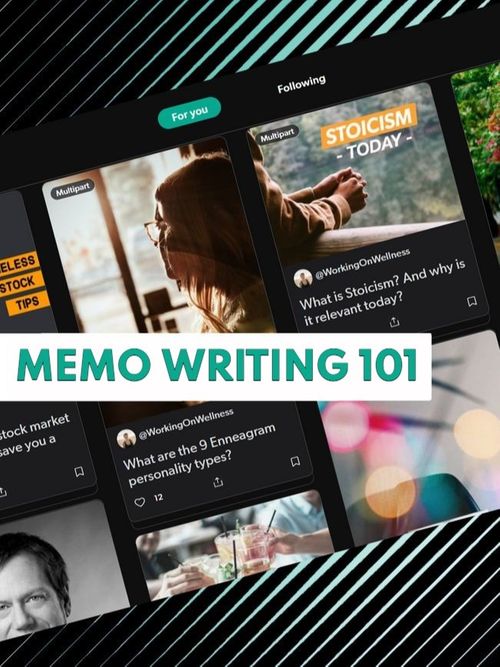What makes a good Memo
Nov 26, 2021 · 2 mins read
0
Share

The best way to learn how to write compelling Memos is to take a look at highly-rated existing ones. See how they are structured in terms of an eye-catching title, first point, and narrative flow. Writing in short sentences makes them more logical and easier to understand.
Save
Share
Choose a Memo title that’s both clear and compelling, e.g. “An ex-FBI agent's guide to winning people over” or “How marketing sneakily affects our decision-making”. The goal is to make your Memo irresistible to readers who are hungry for knowledge.
Save
Share
Tell a story. Even if your Memo is on an academic subject, give a sense of the people behind it. A Memo on Penicillin won’t just be facts and figures, for example, but tells the fascinating tale of Alexander Fleming’s accidental discovery. This helps bring knowledge to life.
Save
Share
Memos are short for a reason. The 280-character limit has a way of clarifying your thoughts, making them more powerful. For this reason, avoid repetition. Make every bullet count: ideas covering similar ground can be condensed and combined into one point for maximum impact.
Save
Share
Don’t assume any knowledge on the reader's part. If a relative or friend read your Memo, would they understand everything? Are all concepts and ideas as clear as can be? If you use a specialized term like ‘functionalism’, for example, remember to explain it briefly.
Save
Share
Your first and last points are the most important, so spend the most time on them. The opening bullet must pull the reader in so that they want to keep reading. Set the scene in a way that introduces your idea with intrigue.
Save
Share
Here’s an example of a strong first point: “Nostalgia is a momentary yearning for the past. But even this simple definition took experts centuries to come up with... mostly because nobody was sure how or why we experience it.”
Save
Share
Build your Memo using facts or examples that illustrate what you’re saying. Simple everyday applications of ideas allow readers to grasp concepts that may otherwise seem abstract. Be clear about any background information or sources. This gives your Memo credibility.
Save
Share
Make sure any Memos you create are in your own words and do not include any plagiarized content. (Quotes are encouraged as long as they’re clearly attributed.) The ‘source’ field at the end of the Memo composer allows you to link back to any source material.
Save
Share
Consider an ending that sums up your ideas. Does your Memo end with a thought-provoking question or takeaway? Many final points begin with a bolded “Bottom Line:” followed by a short recap to help readers retain what they’ve just learned, and see the value in what you’ve shared.
Save
Share
0